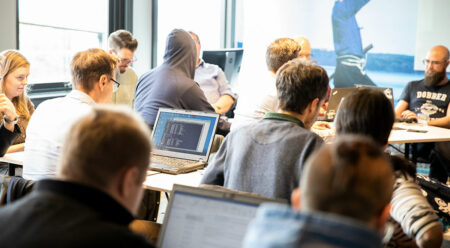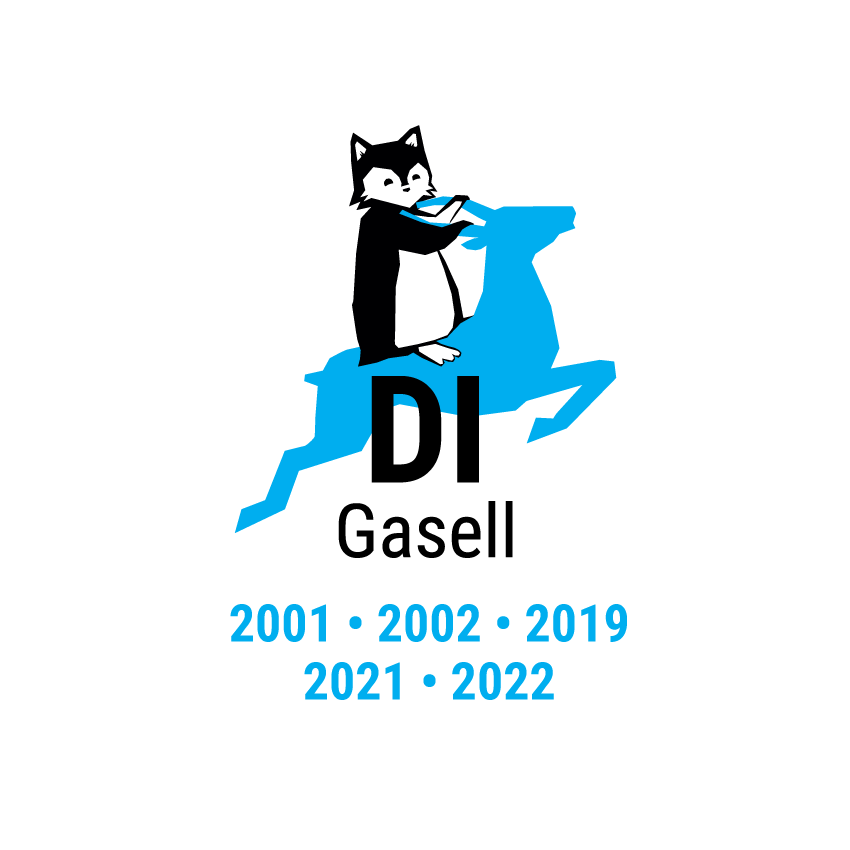This is the second blog post in a series about understanding a new product idea. For context, see the first post here.
Product Vision Board
The Product Vision Board frames the rest of the two-day workshop. We try to reach consensus on very basic questions regarding a product idea. Filling in the Product Vision Board with a cross-functional team really sparks fantastic discussions. I also think it is very apparent here if there is a perspective we are missing. For instance, if the key target group is sales, why are they not represented in the workshop?
The Product Vision Board is our first chance to practise participatory decision making to really make informed decisions around what we’re trying to achieve. Even though the Product Vision Board sets the focus for the rest of the two days, I try to time-box it to one hour. We can always revisit if needed.

I try to start with needs and target group as they are closely linked. What are the needs we are trying to address with this product, and who has these needs? For needs we also need to separate who are paying for the product (customers, or sponsors if it is an internal product), and who will be using the product. If there are needs that don’t have a target group, we probably need to add a target group. If there are target groups that don’t have a need, are we sure we have covered our bases? The target groups are critical in understanding who we need to validate our assumptions with for the product.
Next, I usually move on to covering the product. I try to limit this column to three-five bullet points. We don’t want an entire backlog. That comes later. I also try to describe what the product is (an app, a web application, an appliance etc). The product should meet the needs described in the previous column.
I then move on to business goals, or as I usually frame it, business value. What business value will we generate if we deliver this product to address the needs for the target groups. If we reach consensus on business value it can be very helpful in prioritising product backlog. It can also provide the foundation for developing a business case.
Finally, if we have time I ask people to self-organise into pairs and take five minutes to come up with a vision statement for the product. This vision statement should hopefully use simple language, generate energy and help us navigate tough product decisions. The pairs all present their vision statements and we vote on which one is most appealing. This concludes the Product Vision Board section.
There is also a Product Vision Board Extended. This one takes a little more time to go through but can be well worth it if there a lot of unknowns as to go to market strategies and cost factors and such. This board is generally for external product and you probably need at least 90 minutes.

These Product Vision Boards are based on the book “Agile Product Management with Scrum” by Roman Pichler, and I have taken the pictures from romanpichler.com. I like them, especially the first one, because it is simple to understand and can be covered in one hour of workshopping. When you really need to do value prop engineering I like to use Lean Canvas by Ash Maruya. However, in my experience that takes at least half a day to cover in any detail and is therefore not optimal in this workshop sequence.
Design Studio
The Product Vision Board is rather flat. The product vision doesn’t jump out and grab you. Design Studio is a brainstorming tool to collaboratively design a user experience. We do this simply by putting pen to paper and drawing. This is a highly interactive and creative process that generates a lot of positive energy. It’s also interesting to see different stakeholders’ perspective on what the application and user experience should be. Later when story mapping, having these UX drawings feeds into what functionality we need to implement to convert the story map to a product.
It works like this. Divide people into roughly groups of four. Hand out A3 sheets of paper. Fold the sheets twice, then unfold. You should now have four squares on your paper. Instruct the workshop participants to draw one user interface screen in every square. It can be different alternatives for the same screen, or four different screens that make up the experience or any combination of the two. Give them a 5 minute timebox and ask everyone to draw quietly. Once the five minutes are up, ask them to present their drawings to the rest of the group and the group should provide feedback. Remember, we are brainstorming so withhold judgement, only positive feedback.

Next, divide into pairs within the group. Repeat the folding exercise with the A3 sheet. Within a new 5 minute timebox, repeat the exercise in pairs. Steal and refine ideas that are good. We want to evolve our ideas. After the timebox is up, the pair presents the designs to the other pair in the group.
Finally, the whole group of four gets a 15-minute timebox to repeat the exercise. This time, we use one A3 sheet per screen and try to create a product flow. Once the timebox is up, each group pins up their screens on the wall and each group presents to one another. We should now have some pretty nifty designs of the interface of our product idea that will help us in our story mapping.

This exercise is magical if the workshop participants are cross functional. Ideas evolve collaboratively. The tight timeboxes create focus, so no one has slack enough to fiddle with phones or reply to e-mails. Anyone can do it, I’ve had everything from a blue-collar electrician drawing a design for a work order tablet UI to a Vice President of Sales drawing a graphical dashboard. The drawings are also a great foundation for the discussions that we have when creating the backlog. I’ve literally had people go up to the sheets of paper on the wall and press buttons on the drawings to describe a product flow when story mapping!
Origin of design studio is unknown to me. If someone knows who invented it, please let me know so I can give credit. I got the exercise from the CSPO course at Crisp.
Next post we will go through the story mapping and release slicing.







